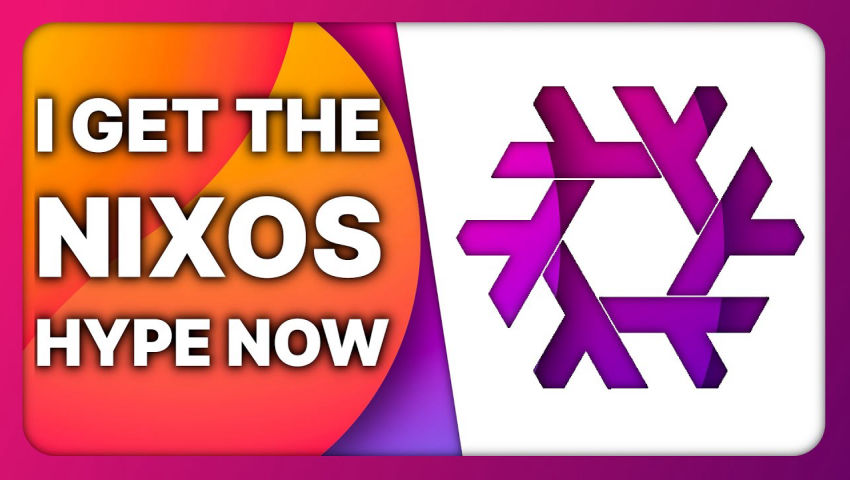This is quite an interesting Linux distro that has been around longer than Ubuntu, but does require some learning of their package management system in the command line interface i.e. not really for beginners.
The single config file gives you the ability to replicate the exact same setup across other machines (organisation) or maybe just for rebuilding your own machine. It also enables you to specific exactly what packages must be installed on any build, ready to use. So to restore, or reproduce, your system all you need is that main config file, and your document and user config files from /home (I'm imagining you still need to backup the entire /home folder).
Updates are run from the command line, but it tracks dependencies separately for each application, so this keeps the system rock solid. One update does not break other packages. As far as I understand it, this extends further than just user applications, so on boot-up at the grub menu, you can roll back changes. Yes Flatpak and Appimages also do this, but only for their applications, and it does support both of this, but not Snaps.
It usually has two stable releases per year, but you can also opt for a unstable rolling release. It has over 80,000 packages so is close to what the AUR has.
So, yes it's a different philosophy, much like Arch is different say to Debian. It does require an initial learning curve, and then you do need to stick to using its package manager and keeping your config file updated when required.
Watch (Peertube) at
NIX OS: the BEST package manager on the MOST SOLID Linux distribution
#
technology #
Linux #
NixOS #
opensource Try out Kasm Workspaces to stream desktops, OSes & apps to your browser: https://www.kasmweb.com/community-edition Or you can use KasmVNC, the best open source remote desktop solution on Linux: https://github.com/kasmtech/KasmVNC Grab a brand new laptop or desktop running Linux: https://www.tuxedocomputers.com/en# 👏 SUPPORT THE CHANNEL: Get access to a weekly podcast, vote on the next topics I cover, and get your name in the credits: YouTube: https://www.youtube.com/@thelinuxexp/join Patreon: https://www.patreon.com/thelinuxexperiment Liberapay: https://liberapay.com/TheLinuxExperiment/ Or, you can donate whatever you want: https://paypal.me/thelinuxexp 👕 GET TLE MERCH Support the channel AND get cool new gear: https://the-linux-experiment.creator-spring.com/ 🎙️ LINUX AND OPEN SOURCE NEWS PODCAST: Listen to the latest Linux and open source news, with more in depth coverage, and ad-free! https://podcast.thelinuxexp.com 🏆 FOLLOW ME ELSEWHERE: Website: https://thelinuxexp.com Mastodon: https://mastodon.social/web/@thelinuxEXP Pixelfed: https://pixelfed.social/TLENick PeerTube: https://tilvids.com/c/thelinuxexperiment_channel/videos Discord: https://discord.gg/XMuQrcYd #nixos #linux #linuxdistro 00:00 Intro 00:36 Sponsor: Kasm, the best remote desktop tool 01:22 What is NixOS? 04:20 Using the configuration file 08:58 Nix Package Manager 11:03 Updating and unstable channel 12:48 Nix is way more than that 14:53 Sponsor: get a PC made to run Linux 15:58 Support the channel NixOS is a Linux distribution that is completely and entirely reproducible. Everything you use is defined in a configuration file that is used to build your system. All the services, packages, options, partition layout, hardware, everything, is in this config file. If you're a developer, your eyes might be sparkling right now: that's right, one config file to exactly replicate your entire development environment. You also can never get into dependency hell. Packages all declare exactly which versions of each library they need, and these versions are all installed side by side and kept, not erased by newer versions. To create your configuration, there's a main configuration file in /etc/nixos, called configuration.nix. This file uses its own specific syntax, that is entirely functional: it describes everything the system uses and with which options, from the hardware, the bootloader, the services, the packages, the apps, the users, everything. This file is then used to build your operating system. Nix will read everything in there, and install, configure, and enable or disable everything, based on what the file contains. So, if you build a nixOS system with the same config file as someone else, you'll get exactly the same system. Once you rebuild your system, there are now multiple entries in the boot loader: one for the new build, and one for the old one: you can always roll back to the previous configuration. Of course, all of this requires root access to edit the main config of the system. But if you don't have root access, or if you don't want to add programs to your main reproducible config, but just test them out for now, you can also install packages as a regular user, using the nix package manager. Or you can add flatpak to your config file, or run appimages. But installing programs will be mainly done using the Nix package manager. The Nix package manager works on any Linux distro, but also on macOS, WSL, and more. It's preverytty easy to use. If I want to install, for example, OBS, I'll just type nix-env -iA nixos.obs-studio The -i is the argument to install, and the capital A is to tell the package manager to install using the specific name of the package, instead of looking through the whole repo, which is way slower. If I want to remove the package, I can use nix-env -e obs-studio, and it will be removed. Note that installing packages with nix-env doesn't add them to the config file. NixOS works with channels. By default, you'll use the Stable channel, with tested packages that get security updates only, and major feature updates when there's a new release of NixOS, every 6 months. To update, you can just run the command sudo nix-channel --update This will pull all the latest package versions from the channel your system uses. Then you run the "nix-rebuild switch --upgrade" command, and your system will grab every new version of every package, and rebuild the system based on your configuration file. Important to note, the new version of a package is installed alongside the old one. The new versions are the ones that will be used, thanks to a simple symbolic link system that always points to the newest version of a package, but you can rollback to an older one. To get newer packages, at the risk of having a less stable system, you can switch to the unstable channel.
